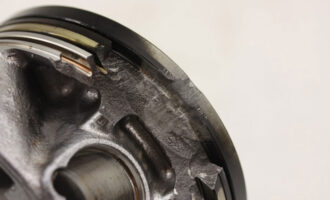
ATIEL seeks to forge closer working relationship with API
Europe and the United States are organised very differently when it comes to the development of engine oil specifications. The American Petroleum Institute (API) administers the Engine Oil Licensing and Certification System (EOLCS) that authorises engine oil marketers to use the API Engine Oil Quality Marks. API develops and owns the lubricant classifications, generating revenue through a fee-based licensing system.
On the other hand, the European Automobile Manufacturers Association’s (ACEA) Oil Sequences provide specifications for engine oils in Europe. However, the development of, and compliance with, Oil Sequences follows a different structure. Different associations exist for the key stakeholders — representing the OEMs, oil marketers and additive companies, and while ACEA owns the Oil Sequences, it chooses not to license them, instead opting for a voluntary code with a Letter of Conformance permitting performance claims. All ACEA Oil Sequences performance claims must be generated in accordance with the European Engine Lubricants Quality Management System (EELQMS) developed and endorsed by the key stakeholders.
Despite two different structures, Europe has stated a desire to work more closely with its North American counterparts. Addressing members of the API Base Oil Interchange Viscosity Grade Read Across (BOI/VGRA) Task Force meeting in Atlanta, Georgia, U.S.A., on 13 December 2018, was Dominique Faure, who was the lubricants research programme manager at French energy company Total at that time. He has recently retired.
A member of the ATIEL BOI/VGRA Committee since 1995 until his retirement, Faure appealed to API members to develop a closer working relationship and identified several possible areas for collaboration.
ATIEL is the technical association of the European lubricants industry, representing European lubricant manufacturers and marketers. One of ATIEL’s chief responsibilities includes developing and maintaining the ATIEL Code of Practice (CoP), which provides clear and consistent lubricant formulation guidelines to ensure quality lubricants that achieve the performance requirements of ACEA Oil Sequences. ATIEL’s 24 members include well-known brands such as Aramco, BP, CEPSA, Chevron, ExxonMobil, Fuchs, Gulf, Valvoline, Total, Shell, and more.
The association also completes regular quality surveys to assess levels of compliance. During his presentation, Faure noted a low volume of non-compliance from ATIEL members in a 2017 quality survey of 184 samples. The bulk of oil failures were attributed to incompatible combined claims e.g. A3/B4, C3; or TBN, Sulphated ash, Noack, HTHS, Phosphorus, MRV, and CCS.

“Historically there has been limited direct communication from ATIEL with API,” says Faure, who was chairman of the ATIEL BOI/VGRA Committee from 2015-2018. ATC is the Technical Committee of Petroleum Additive Manufacturers in Europe. The ATC Code of Practice also forms part of EELQMS and is intended to “encourage both the consistent and precise operation of engine testing and the consistent reporting of results during the performance evaluation of automotive lubricant formulations.”
During his presentation, Faure, an expert in lubricant physico-chemistry (30 years in this field), highlighted changes to the ATIEL Code of Practice in the 2017 release and recent work to harmonise interchange guidelines between ATC and ATIEL. Many of these changes could unlock opportunities for ATIEL and API to work together more easily, he says.
Issue 20 of the ATIEL CoP was released simultaneously with the ATC CoP. The update incorporates new technical guidelines consistent with the latest engine lubricant performance limits set out in the ACEA 2016 Engine Oil Sequences, as well as providing a clearer, more logical format. Changes to the ACEA 2016 Oil Sequences performance requirements included the introduction of new engine and lab tests which are “longer, more severe, more expensive.”
Faure emphasised two important updates to the ATIEL CoP, including the clarification of responsibilities in section 6, and many alignments agreed between ATIEL and ATC, including new viscosity grade read across tables and base oil interchange tables. He also stated that a dedicated strategic working group has been tasked with determining the benefits and feasibility of a cross-industry approach to Base Oil Interchange (BOI) and Viscosity Grade Read- Across (VGRA) guideline development.
During his presentation, Faure identified several opportunities for the U.S. and Europe to work more closely — to avoid unnecessary tests without altering oil quality and customer confidence. Faure sought assistance from API to build a BOI experimental matrix “sufficiently robust to cover at least the main interchangeability cases,” while recognizing that in Europe there is a very large number of ACEA categories for passenger car engine oils.
It is increasingly difficult for ACEA to reach a consensus on hardware and conditions to properly qualify the next generations of engine oils, says Faure.
There is a high likelihood of an increase in the number of ASTM standards in future ACEA Oil Sequences, says Faure. However, API has recently expressed concerns over the use of ASTM engine tests, being developed for ILSAC GF-6A and GF-6B, in ACEA Oil Sequences due to the finite number of test parts and delays in the development of the GF-6 standards.
Faure told the API task force that ATIEL has a significant interest in the new ASTM D7419, the Standard Test Method for Determination of Total Aromatics and Total Saturates in Lube Basestocks by High Performance Liquid Chromatography (HPLC) with Refractive Index Detection. He suggested that a round-robin testing could be organized within ATIEL to ensure precision and reproducibility alignment between European and American laboratories. He also suggested that he is unhappy that ASTM D2007, Standard Test Method for Characteristic Groups in Rubber Extender and Processing Oils and Other Petroleum-Derived Oils by the Clay-Gel Absorption Chromatographic Method, remains the official test method for saturate content in Group II and III base oils.
ASTM D7419 was recently balloted and approved by ASTM and shows correlation with ASTM D2007.
Faure called for greater synergy between ATC/ ATIEL and API to actively search eventual misalignments in CoP Guidelines, or to eliminate any possible redundancies. He cited base oil groups and slates definition, application of the 10% rule, and responsibilities of base oil manufacturers as potential areas where further collaboration could be beneficial.
echo '






